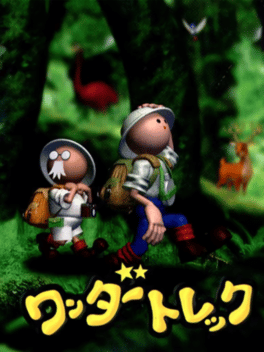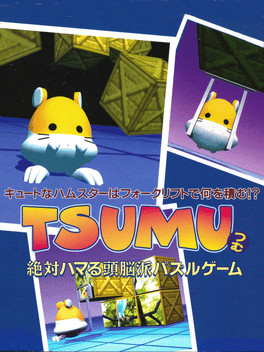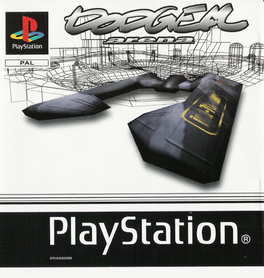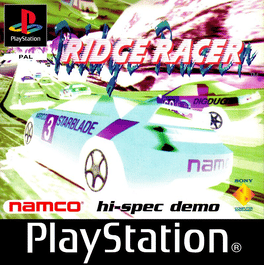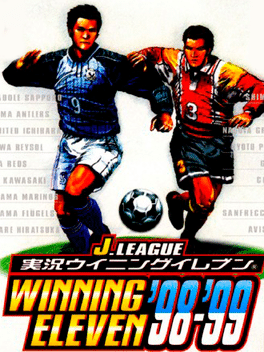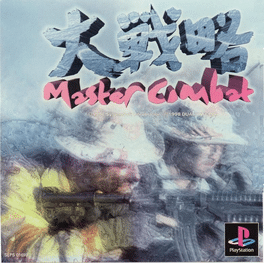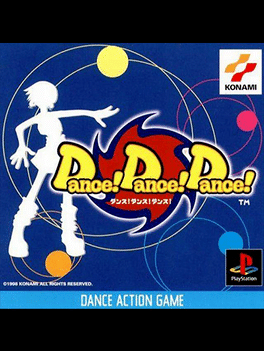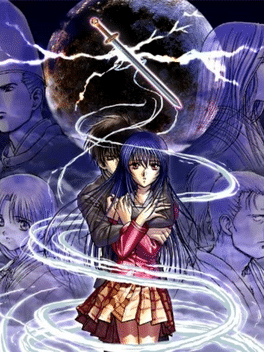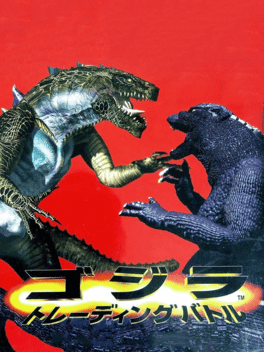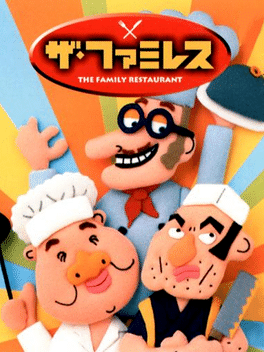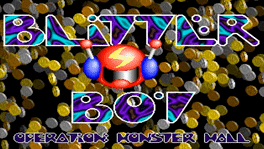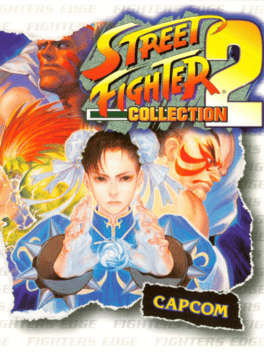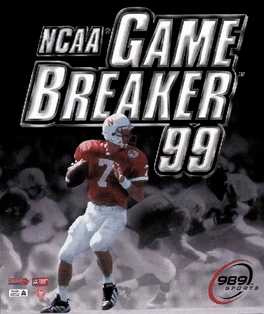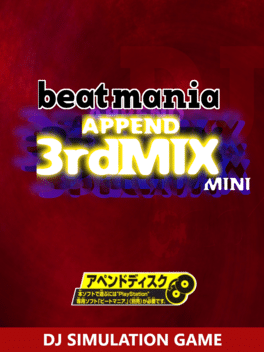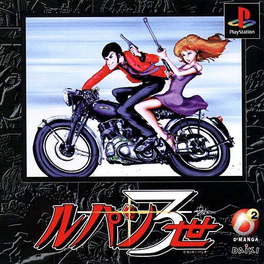New Playstation Games - Page 57
-
Wonder Trek
1998
Wonder Trek
1998
Wonder Trek is a puzzler action game only released in Japan for the PS1. You play as two zoologists: professor Fable and Nick. They are stranded on an island after a plane crash and you and have to find a giant phoenix egg. -
Tsumu
1998
Tsumu
1998
Tsumu is 3D puzzle game where the player, as a hamster, uses a forklift to construct different images. -
Dodgem Arena
1998
Dodgem Arena
1998
It's AD 2049. Superconducting materials and hi-grade hydrogen fuel have changed the world. Skilled contestants from all over the world participate in the thrilling sport of Dodgem. 'The rewards are low, competition is fierce and it's illegal. But in the end nothing comes close to the extreme thrills of the Dodgem Arena.' -
Ridge Racer: Turbo Mode
1998
An updated version of Ridge Racer for the PlayStation, included as a bonus disc alongside Ridge Racer Type 4, and as a limited promotional release in some territories. Unlike the original 1994 PlayStation release, this runs at 60 fps, features higher quality polygonal models and utilises Gouraud shaded textures. -
Susume! Kaizoku: Be Pirates!
1998
Susume Kaizoku: Be Pirates! is a pirate-themed adventure game featuring ship-to-ship combat. -
J.League Jikkyou Winning Eleven '98-'99
1998
The J.League Division 1 is the top division of Japan Professional Football League and is the top professional association football league in Japan. It is one of the most successful leagues in Asian club football and the only league given top class 'A' ranking by the AFC. Currently, J. League Division 1 is the first level of the Japanese association football league system. The second tier is represented by J. League Division 2. The J.League Winning Eleven series is exclusive to Japan and has been released since 2007 before the release of Pro Evolution Soccer and World Soccer: Winning Eleven. Prior to 2007, the game was released after the earlier games were released. J.League Winning Eleven '98-'99 is the officially licensed action soccer game based on the second stage of the 1998 J.League season. It is the follow-up to J.league '97 and Winning Eleven 3. The series is well known for its smooth gameplay and simplicity of controls. Popular "J-League Jikkyou Winning Eleven" series. Recording It is equipped with the l -
Dance! Dance! Dance!
1998
Dance! Dance! Dance!
1998
Dance! Dance! Dance! is an Action game, developed by Konami Computer Entertainment Shinjuku and published by Konami, which was released in Japan in 1998. -
Kuon no Kizuna
1998
Kuon no Kizuna
1998
A work depicting the love affairs of modern boys and girls , born 1,000 years after the reincarnation from the Heian period . All 4 eras all 3 chapters. Chapter 1 is the modern and Heian period, and the season is spring. Chapter 2 is the present day and the middle of the Edo period, and the season is summer. Chapter 3 is the present day and the end of the Edo period, and the season is from autumn to early winter. With the main theme of reincarnation, the story progresses by going back and forth between the present age and the three eras of Heian, Genroku, and the end of the Edo period. The scenario consists of all three chapters. The subsequent story changes depending on how you choose the options in the story. -
Godzilla Trading Battle
1998
Godzilla Trading Battle is a PlayStation video game released only in Japan in 1998 by Toho Co., Ltd. It featured almost every Toho kaiju up to that point as well as 6 new monsters created exclusively for the game. -
The FamiRes
1998
-
Legend
1998
-
Blitter Boy: Operation Monster Mall
1998
Net Yaroze game by Chris Chadwick. Distributed through "Euro Demo 40" demo disc across Europe. -
Hardball 99
1998
Hardball 99
1998
Hardball 99 is a baseball simulation. Hardball 99 follows up on Hardball 5. It is the first in the series to feature 3D enhanced graphics. It also has full Major League Baseball licensing, which allows the use of all real player names and teams. Gameplay modes include: Dynasty Dlay in which players get older over time which will effect their capabilities, Interleague Play, Consecutive Season Play with the amateur draft, and a custom league and schedule generator. An All-Time team that stars famous players from the past is included as well. -
Street Fighter Collection 2
1998
star 7.8The game credited with spawning a one-on-one fighting craze in the arcades makes its PlayStation debut, along with two popular updates, in this three-game compilation from Capcom. Included on the disc are the following titles: Street Fighter II: The World Warrior, Street Fighter II: Champion Edition, and Street Fighter II Turbo: Hyper Fighting. World Warrior has you choosing one of eight characters, from Ryu and Guile to Blanka and Chun-Li, while challenging rival fighters in exotic locales across the globe. With the included revisions to the core Street Fighter II engine, you'll be able to play as the original game's four bosses and master new airborne special attacks while battling at higher speeds. The PlayStation version also supports analog controls with vibration feedback. A memory card is required to save high scores and settings. -
NCAA GameBreaker 99
1998
NCAA GameBreaker 99
1998
NCAA GAMEBREAKER '99 continues this series' tradition of realistic college football simulations. You'll get features like the Customize Play option, which lets you design your own plays and really makes the possibilities almost endless. While many other football games neglect the running game, NCAA GAMEBREAKER '99 embraces it with open arms. Don't be surprised to find yourself on a 60-yard sprint to the endzone! As the running game is essential to any successful college program, the emphasis on it in GAMEBREAKER truly makes this the most realistic football sim you're likely to find. Of course, you also get all the standard gameplay modes, fully polygonal and texture-mapped players, and all of the college stadiums and team logos. NCAA GAMEBREAKER '99 can be enjoyed by up to eight players through the use of the Multi-tap.If you're ready to make a run at greatness, then get your hands on NCAA GAMEBREAKER '99. -
Beatmania Append 3rdMix Mini
1998
Beatmania Append 3rdMix Mini is a smaller version of the PlayStation game Beatmania Append 3rdMix, it contains the same features as the main version but only five songs: find out, life goes on, Queen's Jamaica, tribe groove, and wild I/O. The game came bundled with the soundtrack for the bBeatmania 3rdMix arcade game, titled Beatmania 3rdMix complete. Since this is an Append release, it needs another Beatmania title to act as a key disc to boot the game. The game is played with a controller with one turn table and 5 keys, three white and two black. On the screen you will see bars moving from the top to bottom in columns representing each of the keys and the turntable. When the bars reach the judgement line it is time to scratch. Unlike the arcade counterpart, the PlayStation version does not have a combo counter. Expert mode is also missing from this version of the game. -
Kitty the Kool!
1998
Kitty the Kool!
1998
Kitty the Kool! is a Japan-only PlayStation Hello Kitty game. It is a music-themed game, featuring Hello Kitty, Osaru no Monkichi, Pochacco and Pokopon in special dress. Badtz-Maru also appears. -
Missland 2
1998
-
Lupin 3sei
1998
Lupin 3sei
1998
Lupin 3sei (ルパン3世) is a Visual Novel video game published by Daiki. These are 4 digital manga of Lupin the Third, only released in Japan but for some reason with an English language option.
